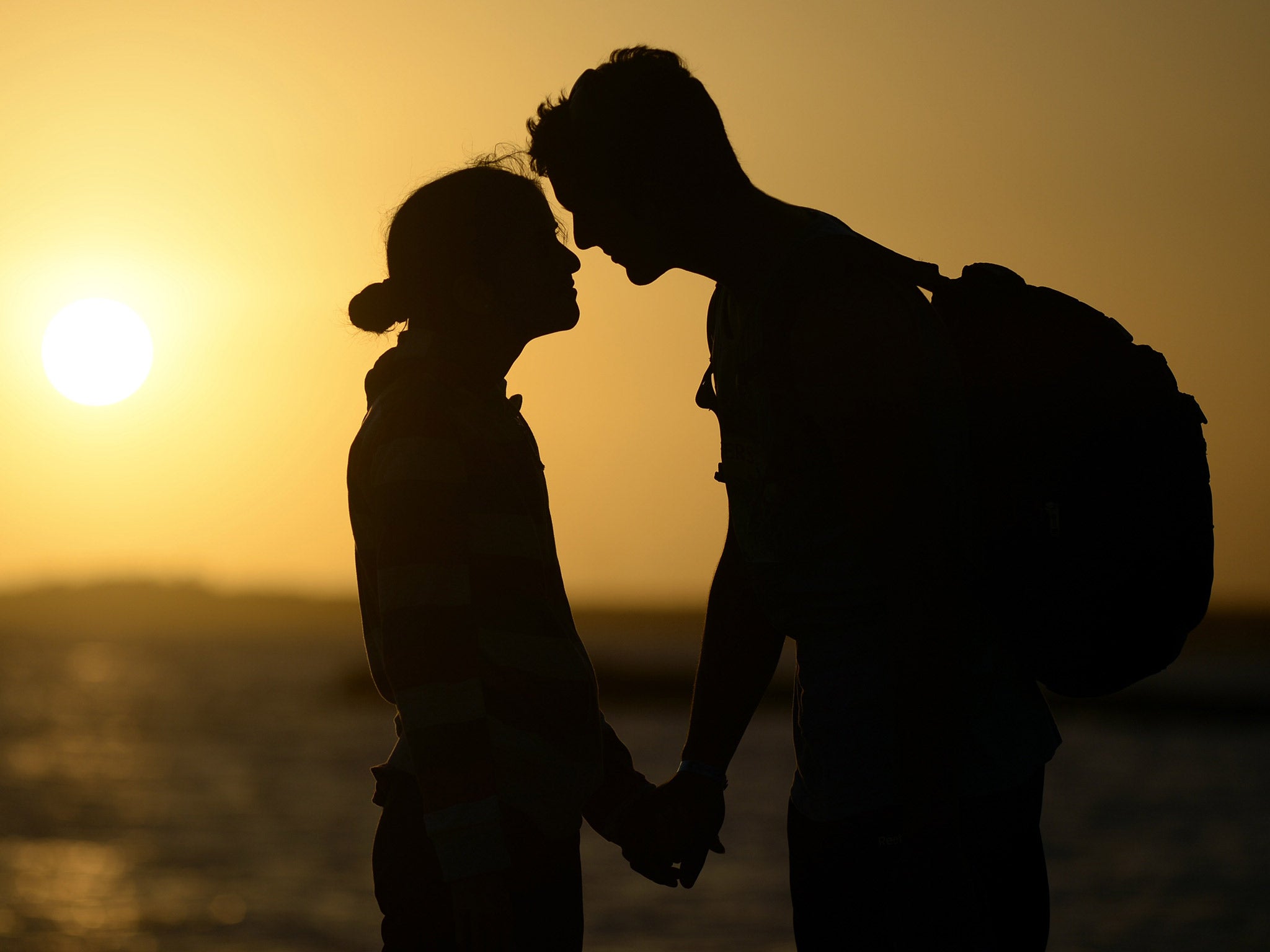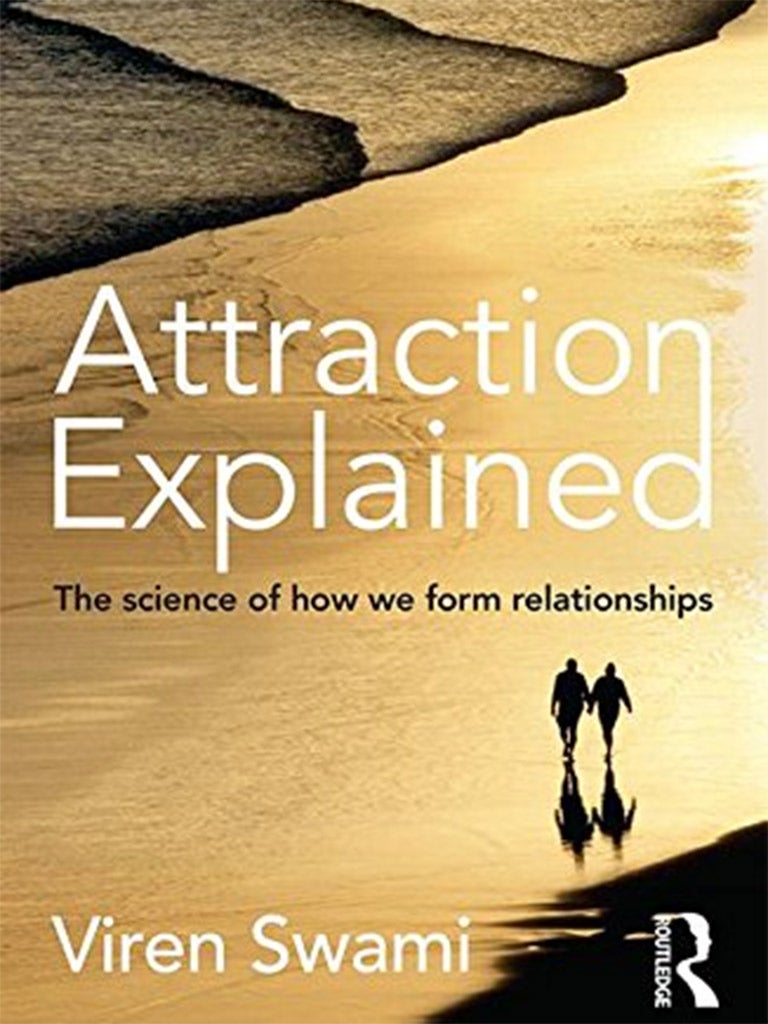How to find love: Search for a soulmate involves four 'key factors'
In his new book, Viren Swami, Professor of Social Psychology at Anglia Ruskin University, offers scientific evidence of how relationships work

Your support helps us to tell the story
From reproductive rights to climate change to Big Tech, The Independent is on the ground when the story is developing. Whether it's investigating the financials of Elon Musk's pro-Trump PAC or producing our latest documentary, 'The A Word', which shines a light on the American women fighting for reproductive rights, we know how important it is to parse out the facts from the messaging.
At such a critical moment in US history, we need reporters on the ground. Your donation allows us to keep sending journalists to speak to both sides of the story.
The Independent is trusted by Americans across the entire political spectrum. And unlike many other quality news outlets, we choose not to lock Americans out of our reporting and analysis with paywalls. We believe quality journalism should be available to everyone, paid for by those who can afford it.
Your support makes all the difference.Earlier this month, Transport for London raised its fares as it invariably does most years, this time by the slightest of increases: one per cent. Nevertheless, it made an already highly expensive travel network incrementally more expensive still, and in doing so unwittingly rendered the process of matchmaking yet more insular.
According to Viren Swami, Professor of Social Psychology at Anglia Ruskin University, geography is one of the four key factors in how we go about choosing the people we fall in love with (the others are appearance, reciprocity and similarity). Mostly, single people are not prepared to travel far to meet potential partners; ideally, our soulmate – that one in seven billion – will live in the same borough, equidistant between pub and cinema. And if they don't, then presumably we simply make do with what – or who – is available, because the prospect of travelling in pursuit of romance remains fundamentally unappealing: we cannot abide the cost, the hassle, all those leaves on the line. We are a sedentary people; we like our convenience.
In his new book, Attraction Explained – which offers hard scientific evidence of how relationships work rather than what he sees as the "anecdotal, non-specific and sometimes downright misogynistic" tone taken by other such titles – Swami explains how distance, or lack thereof, is a key factor in matters of the heart.
"Most partners are found at very short distances," he writes. "Up to 50 per cent of people fall in love with someone within a four-mile radius, and so the further away people live, the less likely they are to form a relationship."
In his book, Swami focuses particularly on London, an area in which it is almost impossible to overstate the importance of location. "The further away a borough was from a participant's place of residence, the less attractive they believed the residents of that borough were," he writes of those taking part in the study.
His findings are uncomfortably revealing. For example, people who lived in the hallowed enclaves of Westminster and Kensington and Chelsea were perceived to be more attractive than those who lived in Bromley, which sits in the humdrum suburbs south-east of London. "Wealth is clearly a factor here," Swami says, and posits some reasons as to why. "Wealthy people might have fewer negative life experiences, and might be more happy as a result, which makes them seem more attractive."
Also, he says, attractive ideals tend to be shaped by those people that have ready access to the media, and help form it, as many of the denizens of Kensington and Chelsea do. But then the way we are meeting now is changing. In online dating, the world is theoretically our oyster, geography be damned. Though UK figures are not yet available, they are believed to be comparable to the US's: one-third of all heterosexual couples in America now meet online, and two-thirds of same-sex couples.

"But while we may have changed the way we meet," Swami says, "the process of our relationships remain the same. We all arrive into them with baggage from previous relationships, and we still tend to enter into them with people who live in close proximity to us. It's easier."
The professor knows of what he speaks. Two years ago, he met online the woman who would become his fiancée. They are to be married in the summer. "She was easily commutable to," he says. "And she was also a lovely person, so I think I would have made the effort to travel to see her even if she had been further away."
But only to a point, for professors are rarely reckless. Her proximity to him (they both live in the south) was as much a factor in her appeal as anything else. "If she had lived in Scotland," he admits, "then, no, I don't think I would have pursued her.
Join our commenting forum
Join thought-provoking conversations, follow other Independent readers and see their replies
Comments